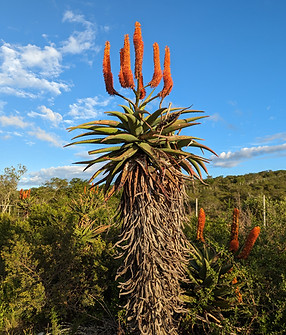
Bowling Club
This has become one of our most exciting projects yet—right in the heart of our village, at the Kenton-on-Sea Bowling Club’s most visible edge at the start of the the high street. Once choked with invasive Inkberry (Cestrum laevigatum) and Madeira Vine (Anredera cordifolia), this neglected patch was in desperate need of attention. The Bowling Club committee and members got involved and cleared the vast majority of Inkberries. This didn't reveal a fresh start—but years of dumped garden waste, rubble, and fly-tipping.
That’s when we stepped in...
Now, we’ve set out to restore and re-imagine this space, removing the remaining alien invasive plants and other debris to make way for a vibrant indigenous garden.
Once complete, this area will become a living showcase of the local flora, transforming an eyesore into a source of community pride and ecological beauty.

Beyond the Greens: Help Us Beautify Our Town
Transforming the Bowling Club garden is a massive undertaking, but the impact is for our entire community. Every piece matters—whether you're donating bricks for paths, specific indigenous plants, your time, or financial support. It's all fueled by community power.
A huge thank you to everyone who has already pitched in! (P.S. We truly appreciate the plant offers, but we must stick to our indigenous-only brief to achieve our vision!)
Ready to help us make the town shine? Please read on to see our specific needs. Even sharing this page with someone who can help makes a huge difference.
Phase 1: The beginning
Although the Bowling Club had successfully eradicated most of the Category 1b invasive Inkberry (Cestrum laevigatum), what remained was a legacy of years of rubbish, green waste, building rubble, and hundreds of glass bottles.
Before any further progress could be made, we had to remove the glass bottles and other litter, extract all the building rubble, and consolidate decades of green waste into manageable piles for bulk removal. Removing good compost is not standard for us, but there were decades worth of Madeira Vine (Anredera cordifolia) aerial bulbils that would have been almost impossible to clear otherwise.




Phase 2: Clearing the Milkwoods
What a blessing to have this beautiful copse of White Milkwood (Sideroxylon inerma). Many residents had no idea what lay under this light-blocking canopy of invasive Madeira Vine (Anredera cordifolia) and massive Indian Caper (Capparis sepiaria) vines.
Although the Indian Caper is indigenous, decades of unchecked growth had caused significant damage, breaking many Milkwood branches and posing a potential safety hazard in this public area. As a result, we made the decision to remove both the invasive vines and the overgrown Indian Caper.




Phase 3: Clearing east fence
We weren’t able to move all the litter, rubble, and green waste efficiently from the east fence to the main removal point at the south fence, so this became a separate project.
Once again, we were surprised by the sheer volume of litter, bottles, and building rubble that had to be cleared first. However, the area is now fully prepared for landscaping.




Phase 4: Rubble & rubbish
Years of dumping and fly-tipping had left the area in a poor state. Unfortunately, much of the litter and rubble was mixed in with green waste, requiring a slow and careful separation process before the organic material could be removed.
The sheer number of bottles was astonishing—literally hundreds. We filled 16 bags with bottles in the first 3 days and at least that number again over the next 3 weeks, and we continue to uncover more as the work progresses. It’s been an unexpected glimpse into the history of SA Breweries!




Phase 5: Clearing green waste
The volume of green waste on site was far too great to manage or re-purpose entirely for composting. As expected from a Bowling Club, much of it consisted of many years’ worth of grass clippings. We retained a portion of this material for our own composting needs.
A significant effort was made to clear and relocate the excess. To facilitate this, we temporarily removed several panels along the south fence and brought in a TLB along with a couple of trucks.
In total, 13 truckloads of green waste were transported to the Bushman's green waste site during this phase, where it will be recycled into compost.
On top of this, we keep producing more green waste that we don't have the facilities to compost yet. Thankfully Kenton Garden Services is removing this for us.




Phase 6: The hidden rubble tip
We had barely broken ground here before uncovering a staggering amount of hidden garbage: buried rubble, old plumbing pipes, metal scrap, and another endless supply of glass bottles.
After hand-clearing the worst of it, we brought in the TLB to finally move the mass of debris and get the restoration back on track.




Phase 7: Land-scultpting begins
The surprises kept coming. We found large pockets of buried green waste hidden beneath a thin layer of topsoil. To ensure a stable foundation for paths, plants, and structures, we had to either remove this material or mix it thoroughly with a significant amount of fresh soil.
Our momentum was halted by the discovery of a huge deposit of dumped engine oil. This environmental hazard had contaminated several cubic meters of soil and required immediate and careful removal, causing a major delay.
Now, with the cleanup complete and the site defined by massive piles and deep trenches, the real work began. We shifted focus to structuring the landscape and creating a cohesive garden design. This foundational phase is an immense undertaking that would become our primary focus over the next few months.







